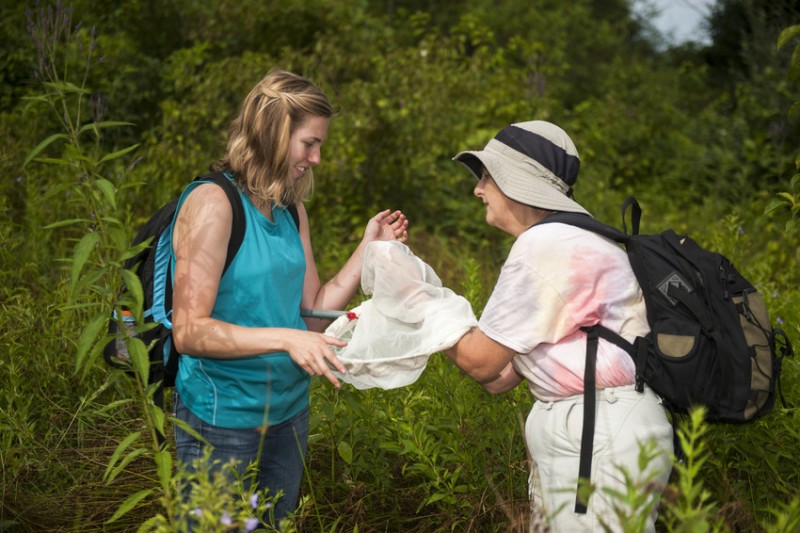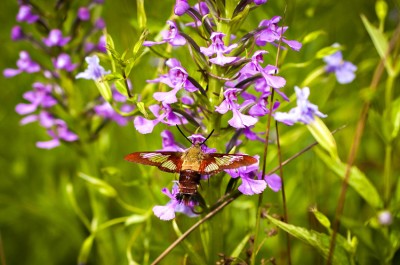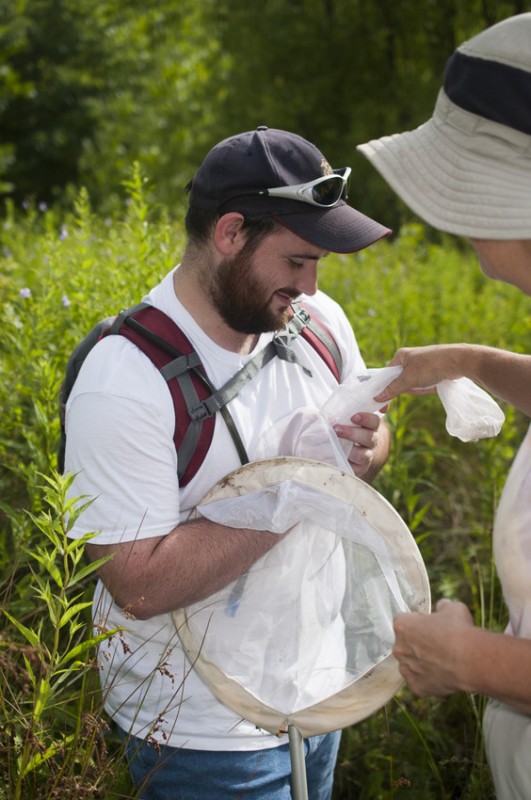Catching pollinators on the purple fringeless orchid requires patience—and more patience.

Just ask Tresa Scruggs ’16 and Phil Deyerle ’16. They spent part of their summer studying the flowers at University of Lynchburg’s Claytor Nature Study, which is one of several sites scientists know for an abundance of the otherwise-rare Platanthera peramoena.
After parking along a remote highway in Bedford County, they trekked through tall weeds with Dr. Nancy Cowden, a biology professor, who explained the importance of the researching the rare purple flower and its pollinators. “We don’t really know a whole lot about them,” Dr. Cowden said. “We have to be aware of what kind of insects are pollinating them so we know not to remove the other plants the pollinators feed on.”
The path through the weeds would be hardly visible to the untrained eye, but Tresa had come to check on the orchids enough that she led the way confidently through the weeds and grasses, between thick bushes, and around protruding, thorn-covered vines. The destination was a small plot of land where orchids grew amid tall grass. Orange flags pinpointed the location of each orchid plant.
Tresa and Phil armed themselves with nets and they each picked a different flower.
Then the waiting began.

Bees, butterflies, moths, and other insects darted through the brush, landing on many of the plants to gather nectar. Every few minutes, one would finally take interest in an orchid.
If an insect doted on the orchid long enough to be considered a pollinator, the students tried to catch it in the net and then carefully transfer it to a cooler so they could inspect it and identify it later in the lab. Sometimes the bugs escaped—and sometimes the wind picked up at just the right time to sweep the pollinators away.
It’s worth the wait, Tresa said, even if for no other reason than to enjoy the warm sunshine in a beautiful part of the world.

“I’ve always been interested in doing more at the Claytor Center,” said Tresa, who is majoring in music education and minoring in biology.
While taking Dr. Cowden’s course on plant biology, Tresa asked about getting involved with research. She applied for, and received, a $2,000 research grant from the Virginia Foundation for Independent Colleges to support her work on the summer project. Without the grant, this summer would have been like any other—find a job and work full time. “I really wanted to do research,” she said.
Early in the summer, the group read related orchid research and practiced identifying insects while they waited for the orchids to blossom. This took a little longer than expected, so once the buds opened, the research team made many trips to the study site with their nets and cooler.
“I’ve gotten really good at identifying a lot of plants and bugs,” Tresa said. “I’ve got a better grasp of how they all interact.”
Phil, a biology major, balanced his involvement in the research with time helping at his family’s dry cleaning business. He chose to work on the orchid research because he is thinking about graduate school. “Once I took some upper-level classes, I realized it’s definitely something I want to do,” he said, net in hand, waiting for a pollinator to land.
This summer has helped him prepare for an upcoming entomology course, and it has convinced him that he will work on biological research in his career. “I could see myself doing something like this.”

